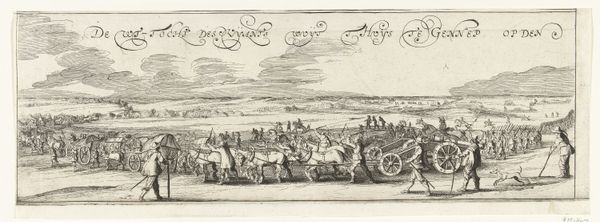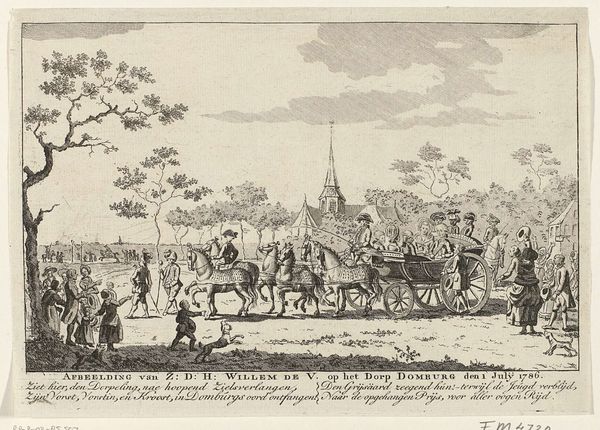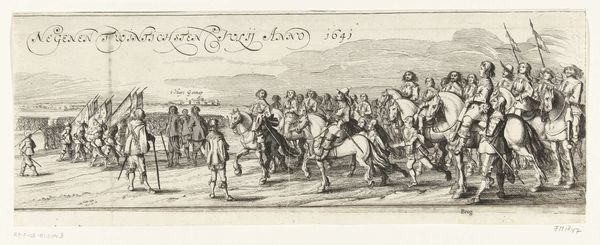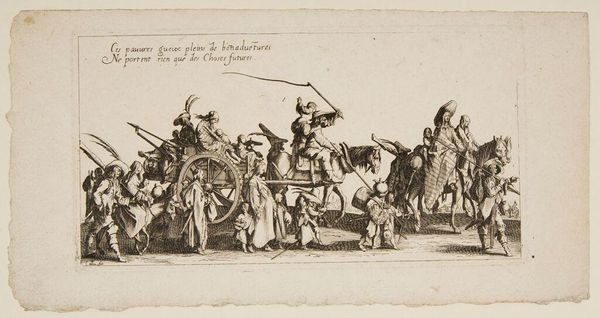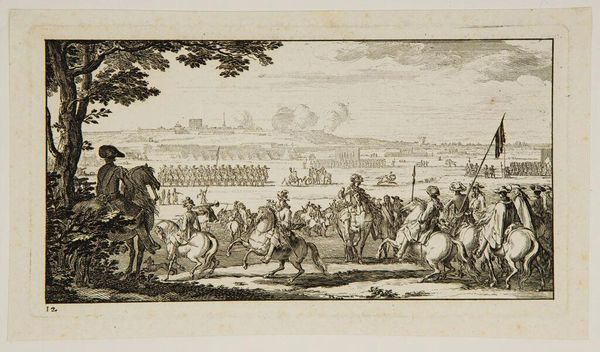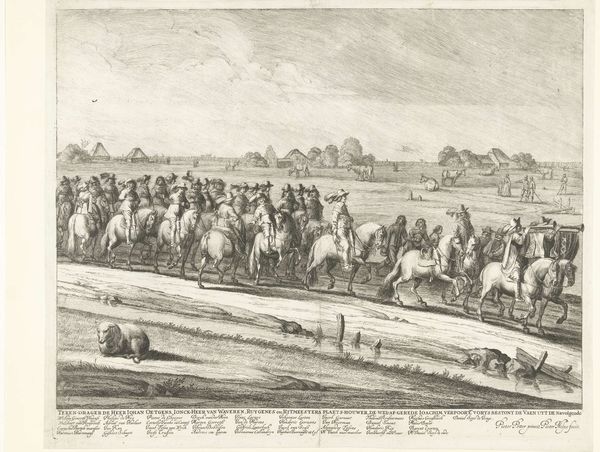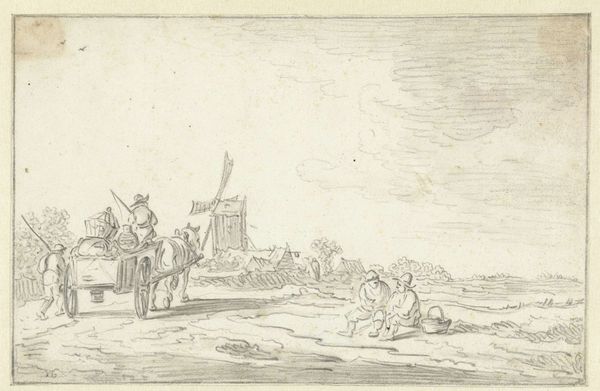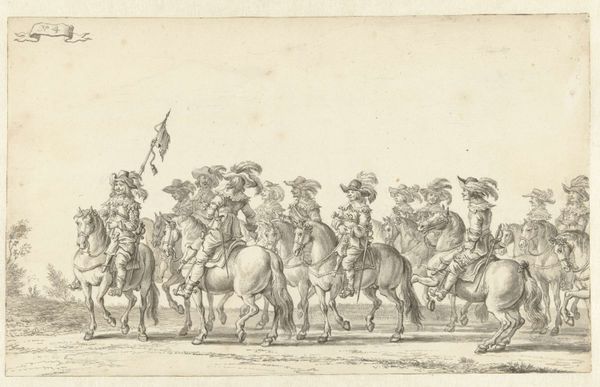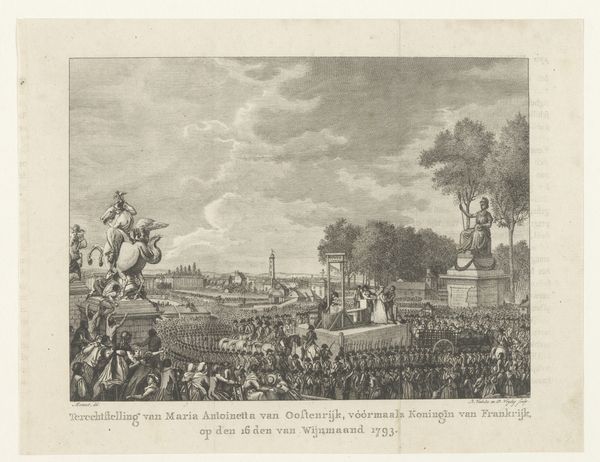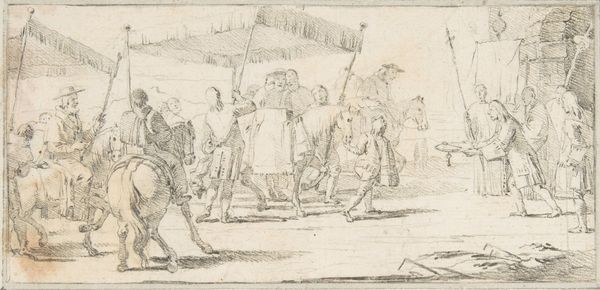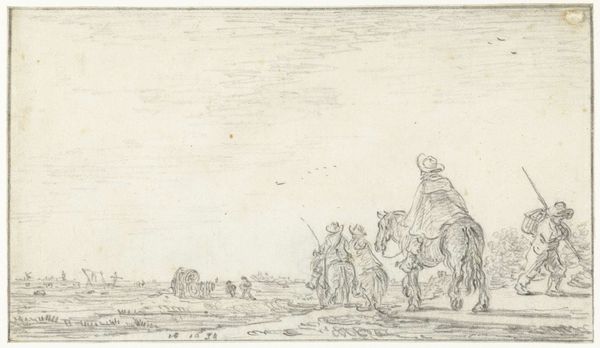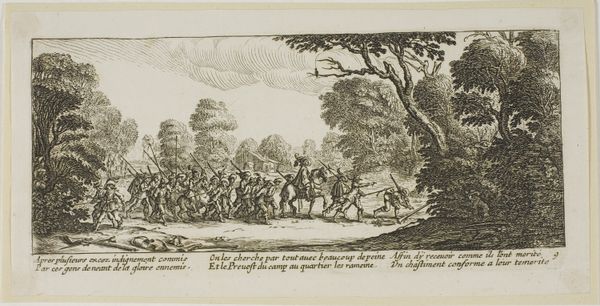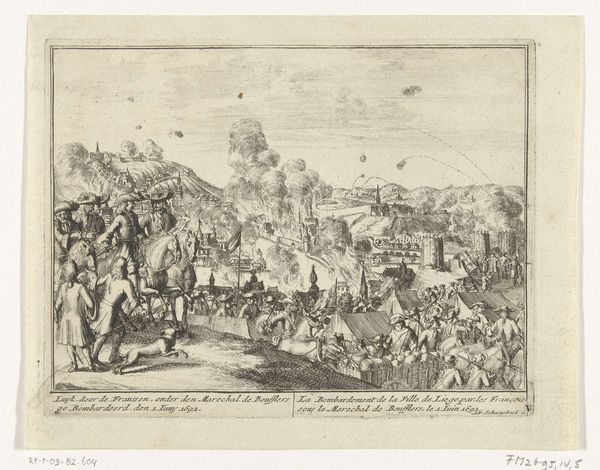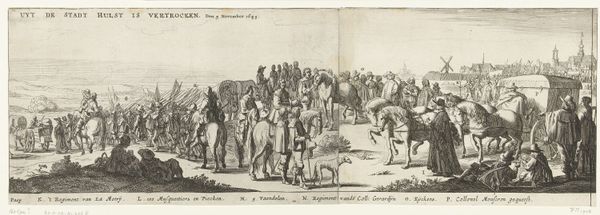
Beleg en verovering van Hulst door Frederik Hendrik (linkerhelft van de uittocht van het garnizoen), 1645 1646
0:00
0:00
print, engraving
#
narrative-art
#
dutch-golden-age
# print
#
landscape
#
figuration
#
line
#
history-painting
#
engraving
Dimensions: height 172 mm, width 570 mm
Copyright: Rijks Museum: Open Domain
Curator: This is a print from 1646, depicting "The Siege and Conquest of Hulst by Frederik Hendrik." Specifically, this panel showcases the Spanish garrison’s departure, captured in a line engraving. The creator is currently anonymous, and it resides in the collection of the Rijksmuseum. Editor: There's such a subdued tone to this print, despite the monumental subject matter. The line work almost gives it a quality of quiet resignation. Curator: Indeed. Engravings often prioritize clarity of information over emotional intensity, but you're right, there is an undeniable sense of order. Consider how linear perspective flattens the background and gives a sense of endless expanse to the procession. This piece carries forward that impulse towards symbolic representation and national narrative. It really reflects a key moment for Dutch identity formation. Editor: I see that reflected not just in the subject of the piece, but the details as well. Notice, how even in defeat, the figures maintain a controlled order? Even their retreat seems strategic, presenting their adversaries with disciplined, calculated withdrawal. We see reflections here of how war reshapes cultural understanding and group solidarity, which also reshapes collective memories for the generations. Curator: Absolutely, look at the cannons, clearly presented as symbols of military prowess. Even the placement of wagons carrying the baggage trains is meant to be read—they are ordered, showing not only function but Dutch skill in the craft of military science. It calls back to a legacy of military manuals but sets it in contrast with that feeling of vast expanse. Editor: Which speaks to a fundamental human tension—the tension between order and chaos. The way lines, representing precision and military rigor, play against the unbounded, undefined terrain. It's like seeing how institutions impose a form of visual rhetoric on the landscape. And this type of "official history" presented as art becomes so very interesting as a cultural artifact. Curator: Yes! Consider that visual rhetoric extending back into illuminated manuscripts depicting warfare; this piece shows how durable some narrative images and symbols truly are! Editor: Absolutely. The narrative power behind these repeated figures. It speaks volumes. Thanks to the artist of this detailed landscape view of human affairs, frozen and distilled in time. Curator: I completely concur, seeing these patterns allows one to perceive their staying power through history. Thank you.
Comments
No comments
Be the first to comment and join the conversation on the ultimate creative platform.
